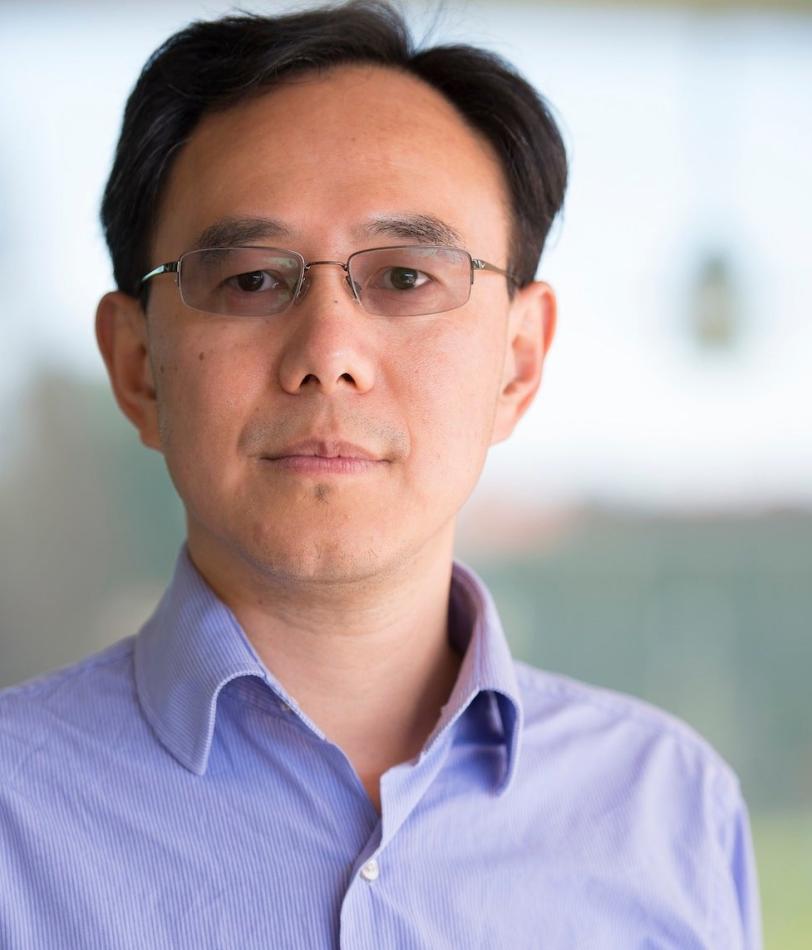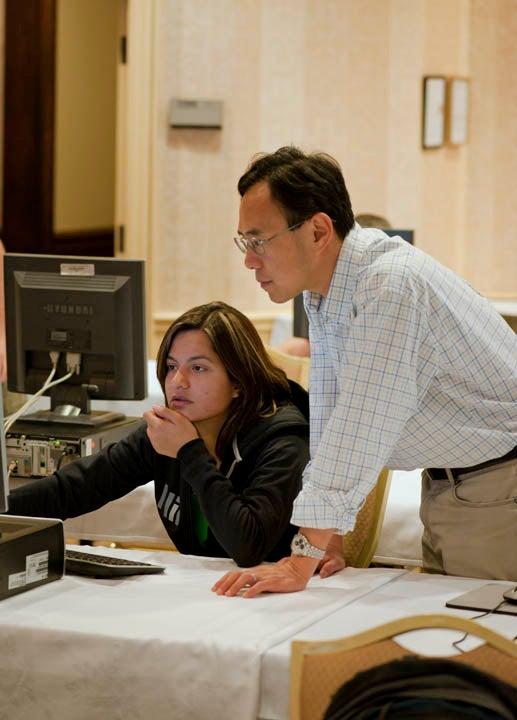Physics and a Common Goal: Zhirong Huang's Road to Success at SLAC
Growing up in China shortly after the Cultural Revolution, Zhirong Huang may have been the only middle-school child in Beijing who knew anything about SLAC. Today he’s a notable innovator in the design of particle accelerators and free-electron lasers.
By Mike Ross
Growing up in China shortly after the anti-intellectual upheaval known as the Cultural Revolution, Zhirong Huang may have been the only middle-school child in Beijing who knew anything about SLAC. His parents were theoretical physicists at China's Institute of High-Energy Physics, and his father, Tao, was one of the first three theorists from mainland China to visit SLAC after their country ended years of self-imposed introspection and opened communications with outsiders.
Today, Huang is one of SLAC's most recently tenured scientists with an impressive list of accomplishments in accelerator research and development. While his family history led Zhirong to physics, his love for applying theory to equipment and experiments guided his career.
"I like the intimate connection between theory, simulation and experiments," Huang said. "We all strive together toward our common goal of a working accelerator."
To date, Huang has helped invent a compact synchrotron that's being commercialized by a private company and worked on projects that led up to SLAC’s Linac Coherent Light Source (LCLS) X-ray laser. He then became a key contributor to many LCLS improvements, such as the self-seeding technique aimed at greatly increasing LCLS's X-ray coherence and narrowing its band of wavelengths.
A Father's Footsteps
It all began with Zhirong's father, who took full advantage of his opportunity to work at SLAC from 1979 to 1981, co-authoring an influential paper on the forces holding quarks and gluons together, and made many shorter visits over the next two decades.
After Tao first visited SLAC, he encouraged his son to study abroad. Before Zhirong could transfer to the California Institute of Technology in 1989, however, he had to demonstrate his aptitude by studying physics at Peking University for two years. After graduation, Huang entered Stanford's graduate school, where Professor Ron Ruth, who was also a member of SLAC's Accelerator Research Division, became his thesis advisor.
"He was a quick learner, and we started working closely together right away," Ruth said. "We had many lively afternoon sessions during which we went through calculations and discussed results."
During one of those sessions, concerning how lasers can cool electron beams, Huang and Ruth realized that certain interactions between the laser and electrons could produce desirable X-rays. This led to the design of a very compact light source that is now being commercialized, under a license from Stanford and SLAC, by Lyncean Technologies, Inc., a private company Ruth co-founded in 2002.
From Argonne to SLAC
Huang's first job after getting his PhD was at Argonne National Laboratory. There he further developed X-ray free-electron laser (XFEL) theory and helped design and build an XFEL test facility, which consisted of a linear electron accelerator connected to a magnetic undulator that produced short-wavelength FEL radiation.
"That was the first FEL to achieve self-amplified spontaneous emission saturation, an important milestone leading to the development of SLAC's LCLS,” Huang said.
Soon thereafter, DOE concentrated its XFEL research and development at SLAC. Huang was delighted to find a job at SLAC, where he was reunited with Ron Ruth and John Galayda, a colleague at Argonne who had become director of the LCLS construction project.
Huang says his style is to study a situation intensely, to the point where solutions seem to flow naturally. He dove into the quest to neutralize a problem that occurred when researchers tried to increase the brightness of the linac's electron beam by compressing it, which conflicted with the electrons' natural tendency to repel each other.
"If you didn't do anything, tiny variations in electron density and energy would be amplified and tear the beam apart," Huang said. The solution, based on an idea suggested by Galayda and a group at DESY in Germany, once again involved a laser, but this time to heat the electron beam rather than cool it.
"I was heavily involved in how to quantify this 'micro-bunching' instability and then how to cure it," Huang said. "The laser heater my group designed is now used daily to optimize LCLS output and is adopted by almost all XFEL facilities."
Launching an X-ray Laser
His most enjoyable professional experience to date was the initial commissioning of the LCLS in 2007-9, led by Paul Emma. "That team worked so well together," Huang said. "It's very rewarding to see your predicted solution actually work in reality. It's also wonderful to see how LCLS has transformed SLAC."
Today Huang leads the FEL research and development program together with Jerry Hastings. In addition to the "self-seeding" for LCLS, he guided research efforts for two-color X-ray generation and femtosecond X-ray profile measurements using an X-band radio-frequency deflector.
Last year Huang was named a tenured associate professor of the SLAC and Stanford faculties. He shares teaching duties for two graduate-level Stanford courses in applied physics, "Electrons and Photons" and "Synchrotron Radiation and Free-Electron Lasers." In recent years he's also taught courses at the U.S. Particle Accelerator School, which gave him one of its biennial Achievement in Accelerator Physics and Technology awards in 2011.
"I really enjoy teaching," he said. "You have to think through ideas very deeply to teach them to students. It helps make me a better scientist."
Away from the lab, Huang enjoys reading history and activities with his wife, a quality assurance engineer, and his two children, aged 16 and 12.
Huang says his father, who still lives in China, is delighted that he is working at SLAC: "During his trips to America, he enjoys visiting not only with my wife and me and his grandchildren, but also with his former research colleagues."







